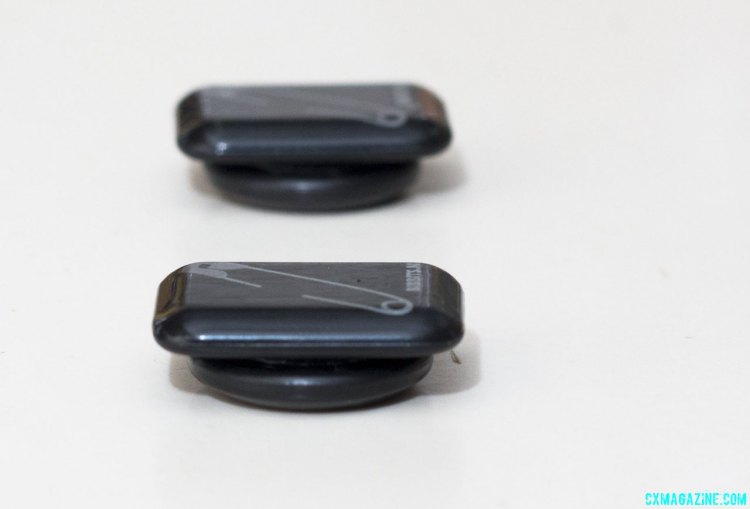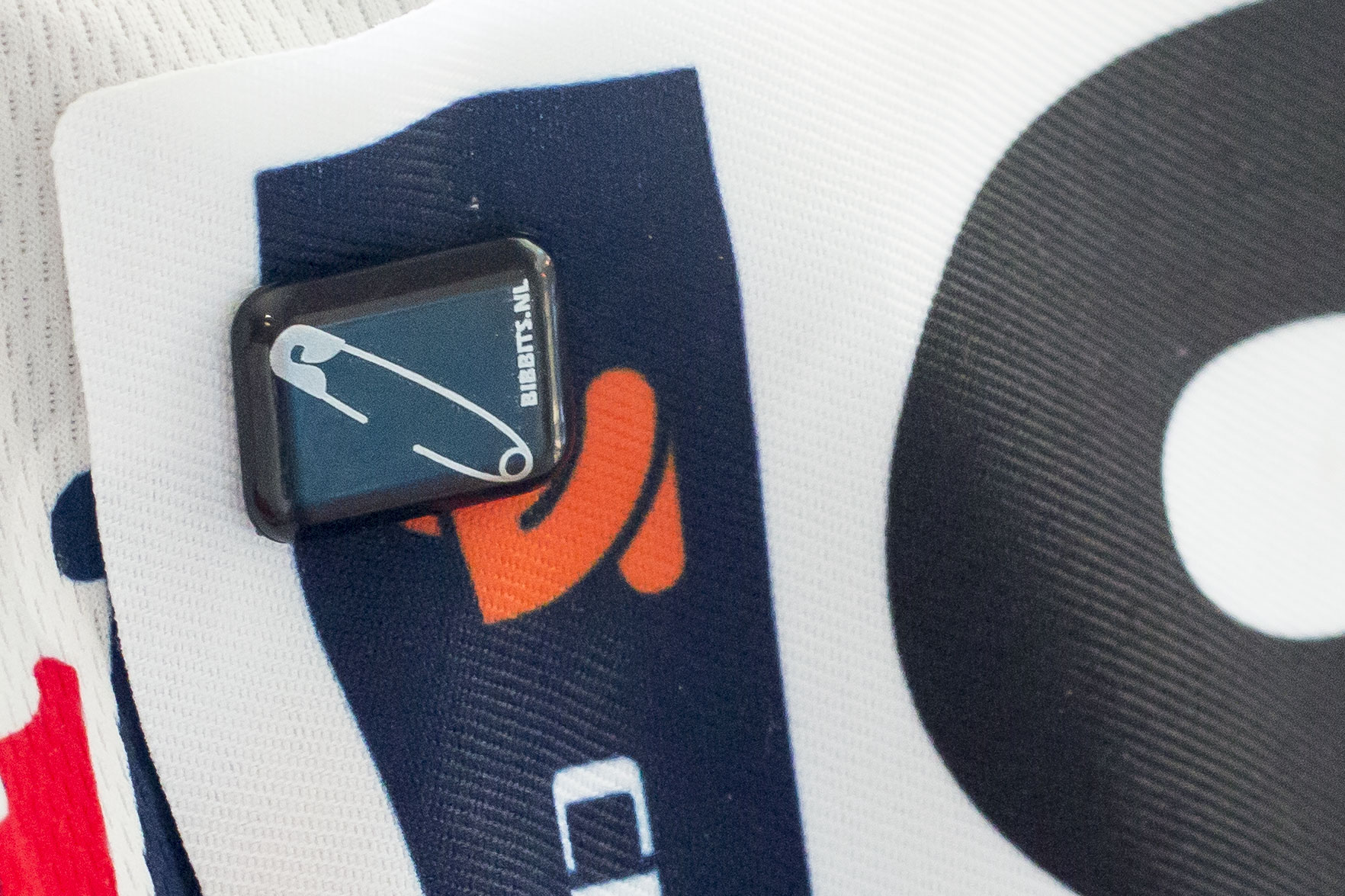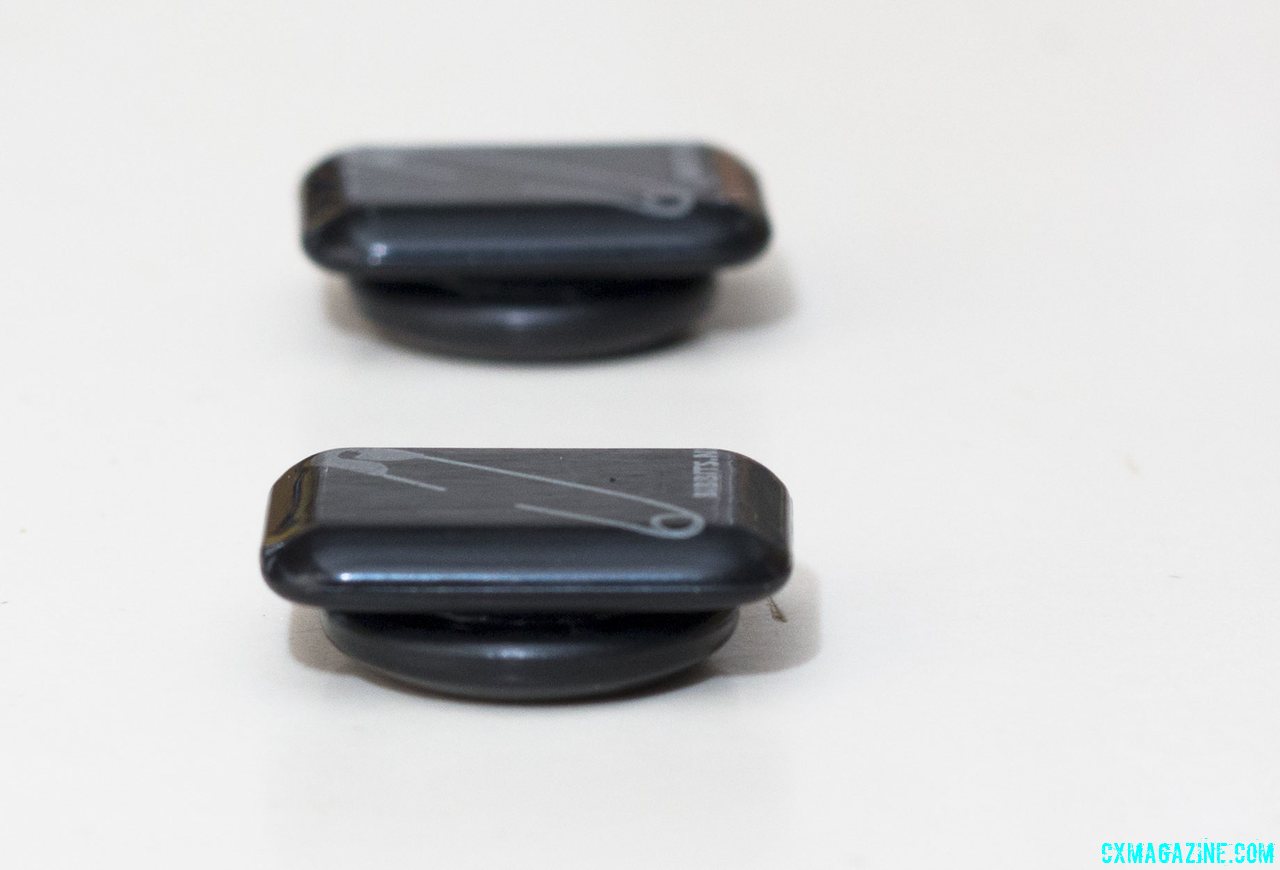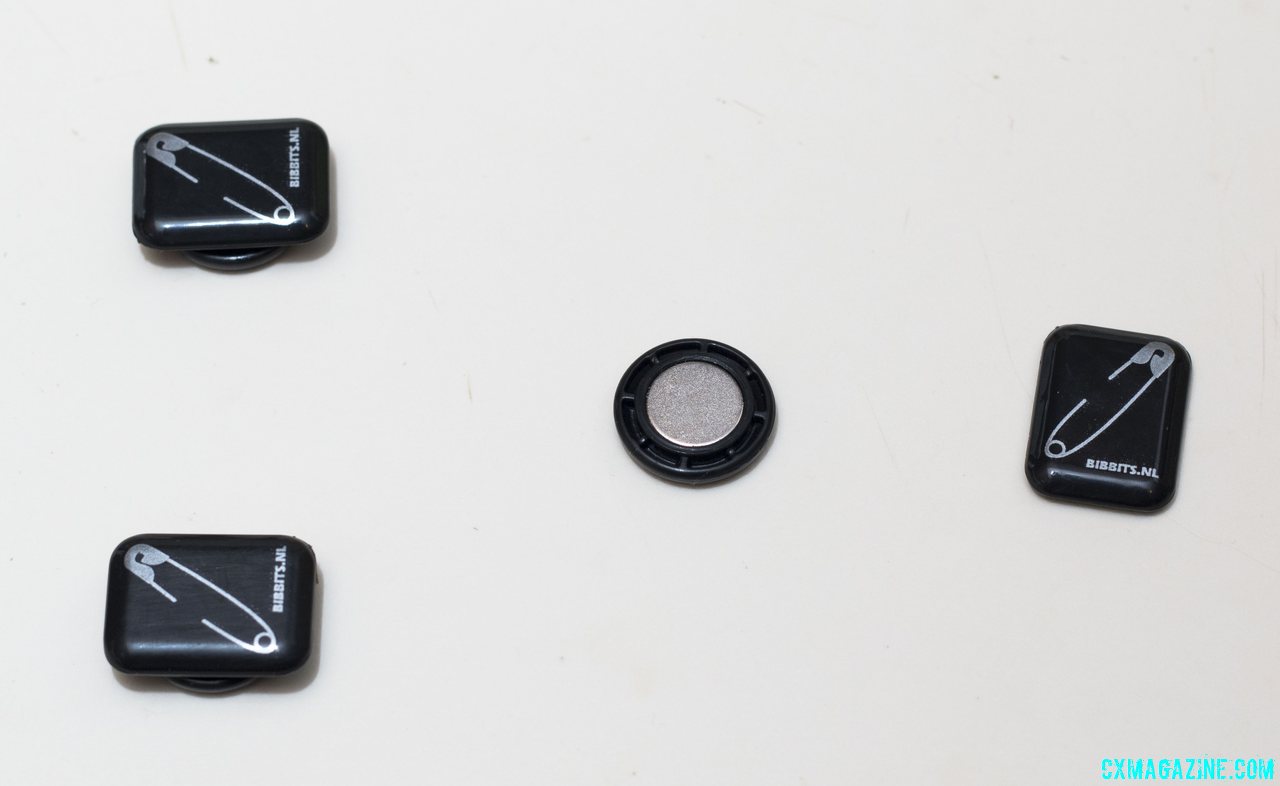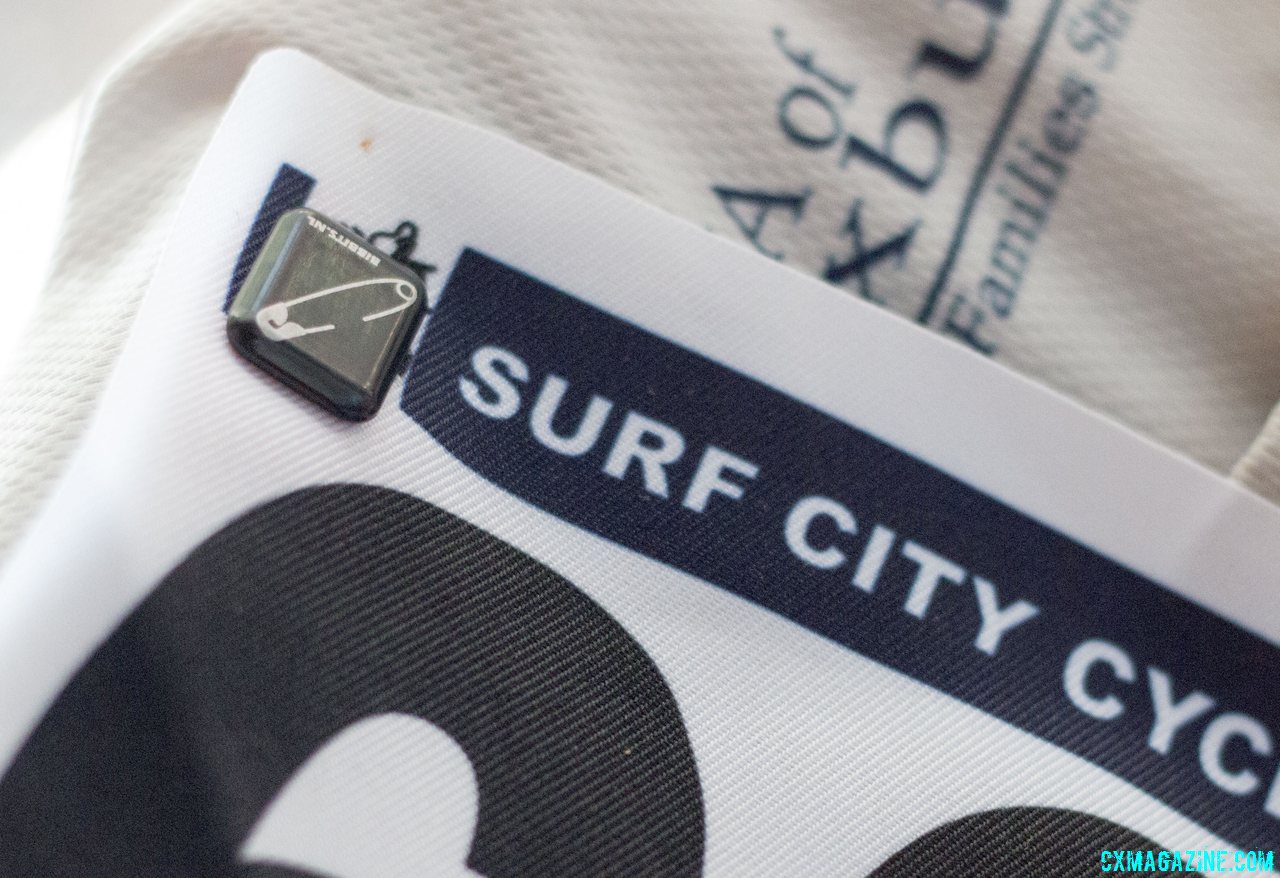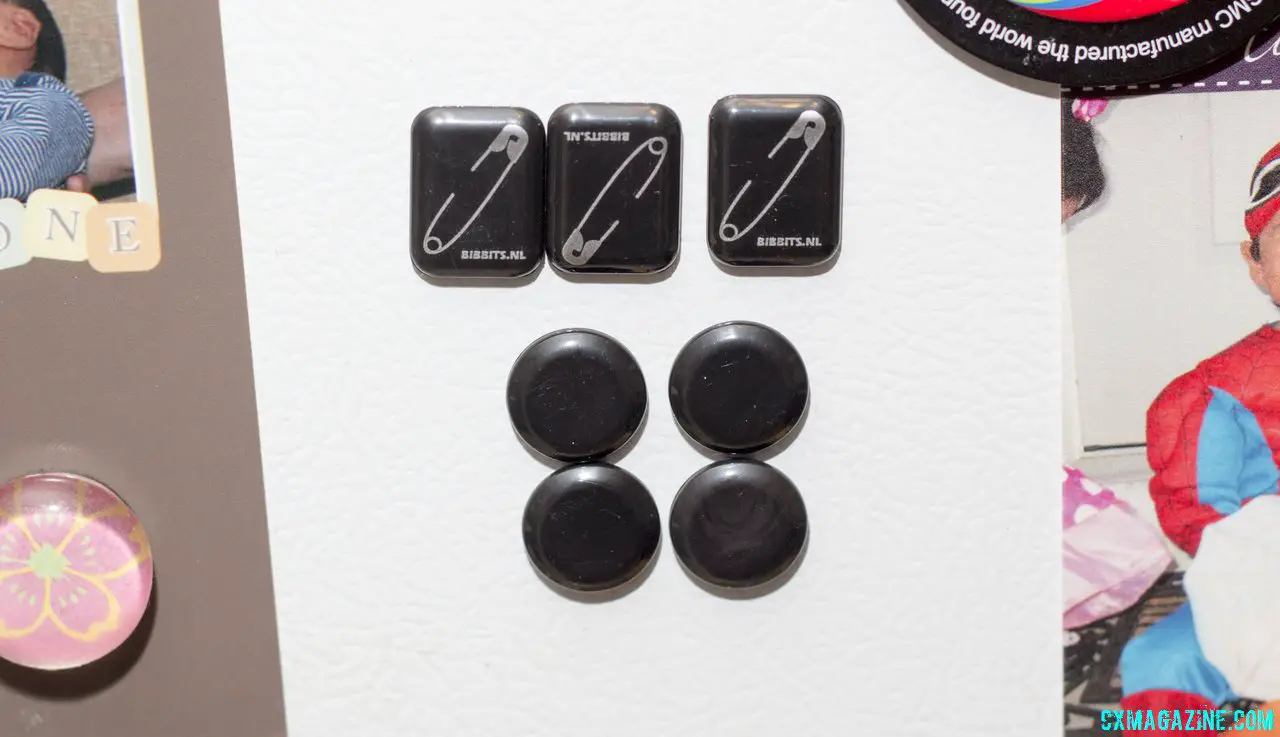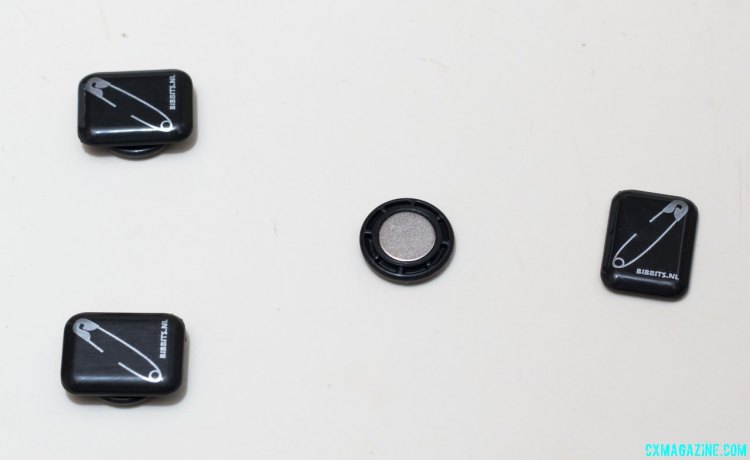
Last weekend, we attached the BibBits magnets to our jersey and gave it the cyclocross run-through. © Cyclocross Magazine
How important are inaccurate race results? Do you want to make it easy on the timing crew? Or is it more important to protect your expensive threads? Perhaps the thought of poking eight holes into a new Rapha jersey or a Castelli skinsuit brings tears to your eyes.
BibBits has been making and selling race number magnets since 2012 and the company targets the running and cycling crowd and anyone tired of safety pins (don’t use these on cloth diapers though, and they’re dangerous if swallowed).
We really wanted to like the BibBits Start Number Mounting kit: Replacing pins with magnets simplifies part of the traditional pre-race routine, making “numbering” a kit a bit faster and protecting clothes from damage.
The process is simple, and putting on a number is literally a polarized snap. The only riders who might be disappointed are the few who prefer to initially mount their numbers while wearing their jersey at the same time; the interior magnets make such work clumsy, even with a partner (but can certainly help break the ice on getting a lot closer). Once the magnets are initially mounted, however, one can easily adjust them to make the number tight against one’s side.
One of the dilemmas is to decide how close to the corners and edges you put the magnets. Too close and any movement of the number will have the number pull out from under the magnets. Too far from the corner and you’ve got a bit of the number flapping around.
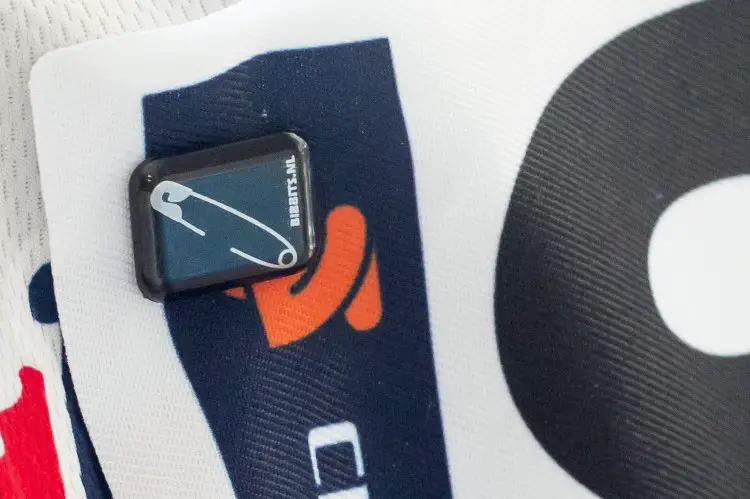
Readjusting is easier with magnets than pins, and BibBits even gives the imitation pin-decal for the traditionalists. © Cyclocross Magazine
During my first test in a cyclocross race, one corner eventually worked itself out from under the magnets. Soon after, I lost the external half of one of the pairs, and the number was flapping in the wind. With such force on the remaining magnets, it was no surprise that the number ripped off completely.
It’s worth noting that the race number I used was a bit more paper-based and rigid than the typical Tyvek race number, and that stiffness could have contributed to it working loose, but I would expect them to work with any number you’d normally pin on.
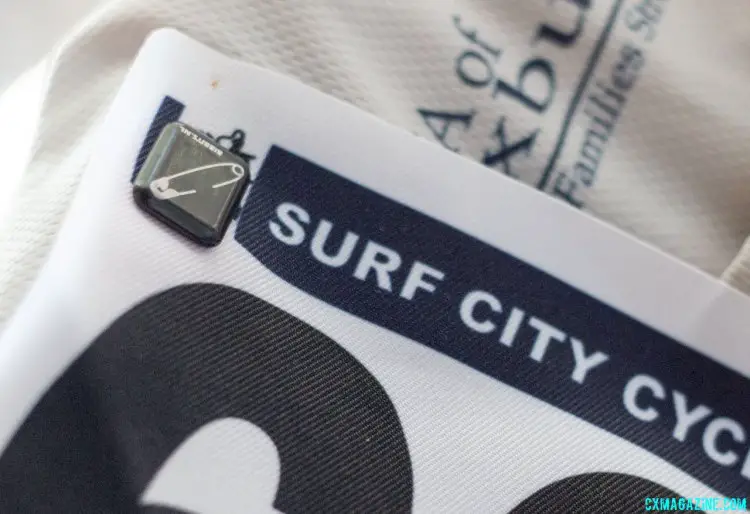
The magnets could be good for running and road cycling, but they didn’t hold up to our early tests on the cyclocross course. © Cyclocross Magazine
Most of us race for results, and if an accurate result is more important than putting a few holes in a jersey, then BibBits doesn’t quite do its job.
Having got the complaints from the initial cyclocross test out of the way, we should note that it looks like the company did think over a lot of variables, albeit for sports without the rigorous demands of cyclocross. The internal halves are rounded for less irritation, and the company claims that they have tested their product with runner’s timing tags and heart rate monitors without any ill effects (those with pacemakers might want to give the magnets a wide berth, though).
Perhaps non-contact road racing or time trials might be a better application for BibBits, but we can’t attest to any aerodynamic attributes and we worry they won’t stay on should you hit the deck (although in road events, keeping your number in place after a crash is likely the least of your concerns).
Would I try them again? I would give them another shot, since my race result doesn’t impact anything and typically isn’t worth bragging about. But I’m now short one pair of magnets, so I can’t quite do another full test. If you do pick up some, pick up a few packages, so you’ll have backups.
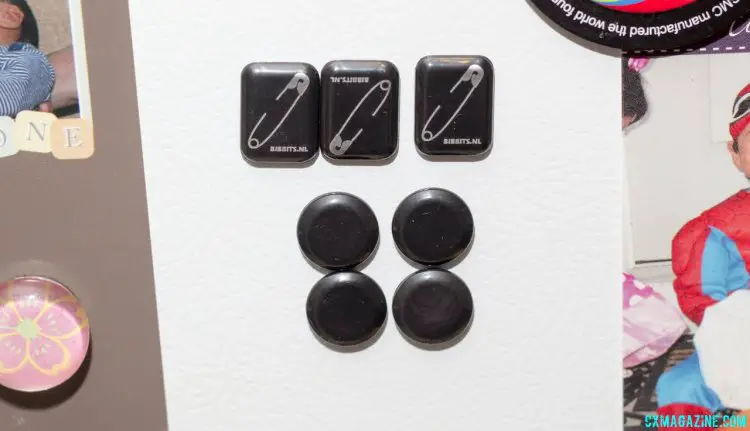
If you end up losing some, they do make great magnets to hold photos and a kid’s drawing to the fridge. © Cyclocross Magazine
They are priced at a little under $14.99 for the full set, with the full weight of all eight halves at claimed 20g. All magnets can be measured by a specific pull strength, which is traditionally the effort it takes to remove a magnet from a sheet of 3mm steel. BibBits has the claimed pull strength of 1.1 kg with the outside magnet of 20x10mm, with 15mm of thickness, and are nickel-plated neodymium magnets.
There’s other options out there too, including a more-recent entry into the market, RaceDots. Interestingly enough, for the DIY racers out there, you can find raw 12mm circular magnets online for a close price with a 2.6kg pull strength. We haven’t tried these out yet, so we can’t report on the possible skin irritation, although cyclocross races are 60 minutes tops, so that might be a non-factor. Also their small size and strong pull strength could make them difficult to adjust or remove.
BibBits come in seven colors, and in packs of four or six.
For more information: bibbits.nl or Pronet Cycling













